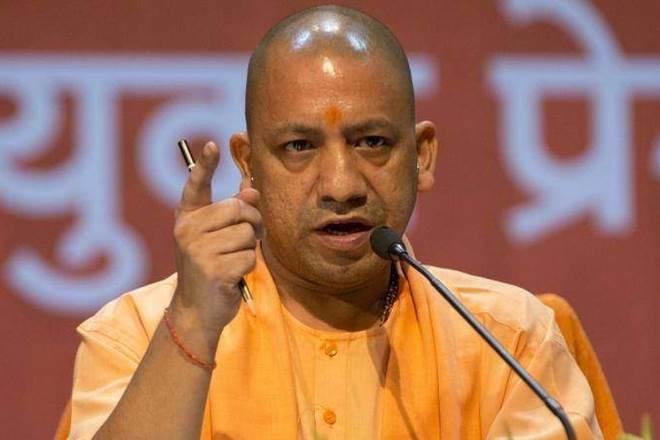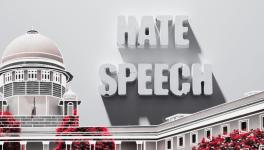Yogi, Pandemic & UP Elections 2022

Image Courtesy: The Financial Express
In terms of ‘cultural’ and exclusionary politics of the Hindu supremacists, Gujarat is increasingly giving way to Uttar Pradesh. This is the biggest Indian province with 403 seats in its legislative Assembly. It sends 80 members to the Lok Sabha. All these factors together and UP has long been considered as the ‘heartland’ of India’s body-politic[1] and has dominated Indian politics for long.
In last three decades however, it has not sent a single Prime Minister to Delhi. The Ayodhya campaign, a central factor which gave rise to the BJP becoming a hegemon, through open tool of what political anthropologist, Edward Anderson calls Soft and Hard Neo-Hindutva[2]. This is meant to be rabid anti-Muslim hatred and persecution aided by strong and sustained assertion on social media to establish the Hindu Rashtra (nation). Hard Neo-Hindutva is pursued by a myriad of Hindu extremist organisations within the country. Whereas, Soft Neo-Hindutva is pursued through various international think-tank organisations based mainly in UK and USA. Such organisations first made their presence felt in their resistance to the Emergency of 1975, when they called themselves ‘smugglers of truth’[3] and resisted the Indira Gandhi-led Congress regime not only through international media, but also within the country under the leadership of both the Socialists and a faction of the Communists. This rich diaspora also provide the necessary funds to the BJP and its affiliates. This diaspora also has, within it, the considerable presence of Gujarati businessmen and professionals.
With the long spell of BJP’s power in Gujarat, and for the last seven years at the Centre, corporate funding has further strengthened the BJP economically. This leaves every other rival political party, far behind in economic and other resources to fight elections.
Thus, economic dominance of Gujarat combined with the demographic strength of Uttar Pradesh together raise a question: even within the ideological rubric of Neo-Hindutva, in terms of regional units, will Uttar Pradesh regain its dominance in Indian politics? Whether Yogi will succeed Modi, rivalling Amit Shah?
These questions have gained an added salience with media-speculation about a tussle between Yogi Adityanath (Ajay Bisht), the Hindu hardliner warrior-ascetic chief minister of Uttar Pradesh and Narendra Modi, the Prime Minister. This emerged after/amidst the second wave of CoViD claiming huge human fatalities that badly exposed the state’s public healthcare apparatus. A series of media exposes of large number of dead-bodies floating in the rivers and buried in the sand-dunes along the Ganges and Yamuna, mostly in Uttar Pradesh, aggravated this. All these gave rise to a set of questions: Have these developments created disenchantment among the BJP supporters in the electorate? Will Yogi be able to get himself re-elected? Should Yogi, a Rajput (Thakur) be replaced to contain anti-incumbency? Are Brahmins disenchanted with Yogi? Should Brahmins, therefore, be given a visible share in power of UP?
Speculation about the replacement of Yogi came to be compared with the 2001 earthquake of Gujarat when Narendra Modi was brought in to replace the chief minister to contain anti-incumbency. The only difference was that after the earthquake of Gujarat, the diaspora-funded relief-works were carried out by the Sangh Pracharaks (volunteers with the Rashtriya Swayamsevak Sangh), also corporate, property developers and other capitalists were rewarded with various kinds of contracts in urban reconstruction works following the earthquake. This in turn worked to fill (as quid pro quo) the coffers of the BJP during elections (demonstrated by Edward Simpson’s book[4].
In contrast with Gujarat 2001, however, Uttar Pradesh hasn’t demonstrated any signs of Pracharak dedication in helping out the CoViD-struck people running for hospital-beds; for Oxygen to breathe, or for various other medicines. State indifference to the indignity to the dead-ones is of course another grievance of people. BJP’s not so good performance in the local bodies’ elections have given further strength to speculations of anti-incumbency.
A point of historical comparison: Gujarat went in for the 2002 December state elections on the heels of an unprecedented massacre, i.e., through initiation of a rabid Neo-Hindutva agenda of majoritarian consolidation. If at all this is a reference point for comparison, then, UP too may have to go for the polls early next year with a similar agenda of anti-Muslim hatred and persecution of the majority in order to achieve Hindu consolidation! Only that will make the electorate forget CoViD related grievances against the incumbent regime. Signs of such a shift of focus have already begun to manifest across UP. A series of recent events: the district administration demolishing an old mosque in Barabanki[5] in violation of a High Court order on that, policemen killing a poor vegetable-selling young Muslim boy in Unnao, a young Muslim boy lynched in Mewat (close to UP), and Cow vigilantes injuring to kill a Muslim boy in Moradabad, etc. If the unreported versions of some Muslim CoViD patients of Meerut and other adjacent towns are to be believed, they faced lots of anti-Muslim slurs and other humiliations even from the doctors of certain hospitals. Only one such barbarity could get reported which is from Agra’s Paras Hospital killing 22 patients including an entire (except a nine year old boy) Muslim family of one, Syed Afzal.
Though, the proportion of Muslim representation in the recently concluded local bodies’ elections in UP is yet to be obtained, it may be argued that enhanced representation of Muslims do help Hindu consolidation. This was one of the factors in 2017, which was preceded by what A K Verma called “Muslim Resurgence”[6] in the local bodies of UP, more so in the urban local bodies of western Uttar Pradesh. Besides this, another phenomenon, ‘everyday communalism’[7], has also been at work in Uttar Pradesh since 2013. Analysts have been arguing that, given the outrage in the international media and human rights organizations, as a matter of Neo-Hindutva strategy, rather than large scale massacre, a sustained low scale communal tension in various parts, and creating fear among Muslims, is now the preferred strategy to sustain Hindu consolidation behind BJP.
The news of the Yogi-Modi tussle, Yogi defying Modi’s desire to take on a retired bureaucrat, Arvind Sharma into his governance fold; Sharma, a Brahman, was attempted to be made deputy chief minister, finally he is vice president of the state unit of the party (BJP). Did all these manoveres help BJP in diverting the media and people’s attention from CoViD related human miseries? Will this politics of diversion really help the Yogi-BJP combine from containing anti-incumbency?
Given the mood of BJP’s supporters as discerned from various WhatsApp groups of Uttar Pradesh, CoViD related human miseries, health unpreparedness and mis-governance by the government—all such government failures – were/are not points of discussion. This is long before the famed “positivity” speech delivered by Mohan Bhagwat. Rather, perpetrated falsehoods vilifying Muslims saying that the community was not contributing to the funds being raised by Modi to fight CoViD, and many other such content-bits of anti-Muslim hatred were in circulation and debate. Ramdev as the “contemporary face of Neo-Hindutva”[8] in India, appeared in these discussions when he attacked allopathy, making people feel that not getting oxygen and hospital-beds are hardly a matter of debate, or regret. This is how he attempted to dilute the people’s grievances against the government on public health-care.
‘Naive’ discussions such as those showering praise upon Modi for enacting the Enemy Property Act and thereby ‘preventing’ huge wealth and assets of India from being taken over by Pakistan were in circulation on many of such WhatsApp groups at the time when the Pandemic was slaying lives. From virtual spaces, these then spill over to the real spaces of the village/mohalla gossips as well. This singular hate-letting also seeks to play down peasant grievances expressed by the on-going Kisan Andolan.
The aggression of Neo-Hindutva politics thus may yet serve to dilute the anti-Yogi resentment to a large extent. More importantly, regardless of its electoral prospects in the face of the immediate and long-term CoViD related crises (including ravaged economy, rising prices, mounting unemployment, and huge profiteering by select capitalist houses), it seems inevitable that the BJP will resort to the politics of spewing anti-Muslim hatred and perceived persecution (of the majority) with greater vehemence. All done to cover up its own failures. This is the worry of what lies ahead when what we need is a more inclusive governance.
Courtesy: Sabrang India
(Mohammad Sajjad teaches history at Aligarh Muslim University.The views expressed are personal.)
Get the latest reports & analysis with people's perspective on Protests, movements & deep analytical videos, discussions of the current affairs in your Telegram app. Subscribe to NewsClick's Telegram channel & get Real-Time updates on stories, as they get published on our website.
























